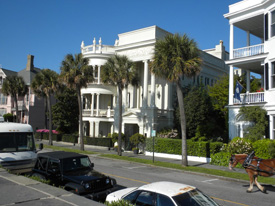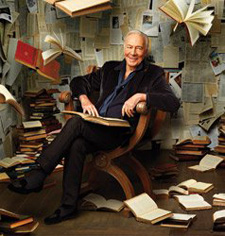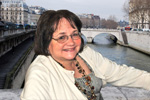

|
|
Empty Nest Magazine
|
The Joy of an Empty Nest:
You, Too, Can Become a Grand Tourist by Ellen Kay Coleman
A Great Opportunity After wonderful decades of soccer, Girl Scouts, trick or treating, and homework, you are now free to begin a journey of your own. In addition to taking a class, decorating a room, starting a book club, or playing more golf, you can experience the riches of travel in ways you never dreamed possible. Up to this point, has your traveling life been limited to beaching, camping, New York City to see the Rockettes, and visits to our nations capital? Or, maybe once a year you called in grandma to watch over the house and little ones while you enjoyed a quick yet relaxing week on a cruise or at a resort to unwind? (Still a good plan and now you dont have to call in grandma.) Now is the time when you can really begin to expand your travel horizons. Id like to tell you how I expanded mine.
My Road to Travel and My First Grand Tour I was born on May 8, 1945VE Day, the day that World War II ended in Europe. In the years following the war, Americans began to travel again. In the early to mid 1950s, if we didnt learn about far-off places from movies or the books we read, we could devour the many magazines designed to whet our travel whistle. Of course, there was National Geographic, with its fabulous photography (actually founded in 1888, a few months after the National Geographic Society was formed) and Gourmet, which began in 1941 and, sadly, ceased publication a few years ago. While my parents were away, I stayed in a third-floor attic bedroom in the home of my favorite aunt and uncle, where I would pore over piles of Holiday magazines, which contained not only exquisite photographs of the worlds treasures but also countless articles by excellent writers who, with their words, ideas, and inspirations, opened me up to the world. As much as I may have wanted to explore foreign places, I did not get the chance until 1963, when I graduated from high school. This teen tour consisted of 49 days in 15 European cities with 50 other kids. Although the trip was certainly not my favorite (you become a better traveler with each succeeding adventure), I still remember my first visit to Rome, Florence, Paris, London, and Amsterdam. One great moment among the miserable ones came with seeing Verdis Aida, complete with live animals, at the baths of Caracalla in Rome. Although we attended the performance as a group, when everyone left early, I stayed on, out of sheer fascination, and somehow found my way back to the hotel. This was my introduction to the world of travel. The tour was tiring, badly planned, and full of the jumps, starts, awkwardness, and frustration that might occur when 50 teenagers who may or may not get along are thrown together for several weeks. Nevertheless, this was my first Grand Tour. But what, you may ask, is a Grand Tour?
The Grand Tour in History The term Grand Tour was introduced by Richard Lassels in his 1670 book Voyage to Italy. The young travelers were wealthy and could afford the multiple years abroad. They carried letters of reference and introduction as they departed from southern England. The most common crossing of the English Channel was made from Dover, England, to Calais, France. It customarily took 3 days. The crossing of the Channel was not easy, though, as it entailed risks of seasickness, serious illness, and even shipwreck. The Grand Tourists were primarily interested in visiting those cities considered the major centers of culture at the timeParis, Rome, and Venice were not to be missed. Florence and Naples were also popular destinations. Paris was definitely the most popular city, as French was the most common second language of the British elite, the roads to Paris were excellent, and Paris was a most impressive city in the eyes of the English. Tourists would not carry much money because of the risk of highway robbers, so letters of credit from their London banks were presented at the major cities of the Grand Tour. From Paris, Tourists would proceed across the Alps or take a boat on the Mediterranean Sea to Italy. For those who made their way across the Alps, Turin was the first Italian city they would reach; some remained, and others simply passed through on their way to Rome or Venice. Rome was initially their southernmost point. However, once excavations of Herculaneum and Pompeii began in 1738 and 1748, respectively, the two sites became major destinations on the Grand Tour. The goal of the Grand Tour was educational, although a great deal of time was spent in more frivolous pursuits, such as extensive drinking, gambling, and intimate encounters. Upon their return to England, Tourists were supposed to be ready to assume the responsibilities of an aristocrat. The Grand Tour as an institution was ultimately worthwhile, for it has been credited with a dramatic improvement in British architecture and culture. However, the French Revolution in 1789 marked the end of the Grand Tour. And, in the early nineteenth century, railroads totally changed the face of tourism and travel across the continent. I believe that the Grand Tourists of the eighteenth century were indeed the first cultural travelers. They were neither crusaders nor explorers, but for the most part, they traveled to learn and to examine other cultures. Now back to the saga of one modern Grand Tourist . . .
From Dental Office Confession to Tour Planning
Still, I never forgot my experience at the baths of Caracalla at age 18, the opportunity to see many of the great Broadway musicals in the 1960s, and the European jaunts in my college days to the Uffizi Gallery in Florence and the Sistine Chapel in Rome. After making airline reservations for corporate executives at my first job, then, in the early 1970s, I was fortunate to work at a travel agency that arranged fundraising trips for museums, including the Philadelphia Museum of Art. Once, the agency was shorthanded and had no one to escort a small group for a museum tour in Toronto sponsored by the Newark Museum. So they asked me to do it, and I readily agreed. I remember a wonderful exhibit of Chinese artifacts at the Royal Ontario Museum and the monumental sculptures of Henry Moore at the Art Gallery of Ontario. Most of all, I adored being with this interesting group of like-minded people. What an exceptional 3 days it was. I knew I wanted to do this for the rest of my life. By 1976, I decided to branch out on my own, so I formed a corporation and opened a travel agency called Masters of Travel. My travel agency was full service, meaning we made arrangements for business travel, as well as handled vacation travel for individuals and groups. A few local museums, libraries, and colleges were my clients back then, and I also ventured forth to market a few trips directly to the public.
Festivals Rule

Street view, Charleston, SC My trip took place in May 1980. I traveled to Charleston a few months before, spent time wandering the cobbled streets to acquaint myself with this magnificently preserved eighteenth-century city, sampled the restaurants, picked out a hotel, and hired a tour guide. When my group arrived, we thrilled at performances of opera, theater, and chamber music, and we also had time to enjoy a spectacular walking tour and to visit historic churches and homes, including Drayton Hall, a part of the National Trust for Historic Preservation. I have taken a few more groups to the Spoleto Festival but in recent years have preferred to visit this part of the world in the more delightful spring and fall off-seasons. When I take a group to Charleston now, we also visit Savannah, Beaufort, and Brookgreen Gardens near Myrtle Beach, the oldest and largest sculpture garden in the US.

House in New Orleans build by Brad Pitt.
My growing enjoyment of music, theater, art, and, more recently, architecture led me down this most fulfilling path of cultural tourism. For the past 20 years, I have been taking groups to enjoy the best of countless destinations in the United States, Canada, and Europe. Our groups have experienced the architectural treasures of Chicago and Berlin; art tours in more than 30 cities, including Los Angeles, Paris, Barcelona, New York, and Dallas; and shorter weekend breaks to exceptional cultural destinations, such as New Orleans, Quebec, Minneapolis, Asheville (NC), and Pittsburgh. In the tradition of the 1980 trip to the Spoleto Festival, each summer we offer excursions to selected performing arts festivals, such as the Santa Fe Opera, Tanglewood and Jacobs Pillow in the Berkshires of western Massachusetts, the Marlboro Music Festival in Vermont, and the Glimmerglass Opera Festival in Cooperstown, NY.
British actress Dame Sybil Thorndike once said, An arts festival brings to you works and performances of a quality, interest, and rarity which you might never experience; you share with others whom you have never met, artists and visitors, the common excitement of what is rare, exuberant, and excellent. It was an early start from the Philadelphia area on departure day because we always stop along the way to see a special museum or historic site. This time it was Ithaca, NY, to see the Herbert F. Johnson Memorial Gallery on the campus of Cornell University. Ithaca is a charming town, and the museum is an exquisite gem designed by I.M. Pei for Mr. Johnson of Johnson Wax, for whom the business school at Cornell is named. It is filled with American, Asian, and European paintings and sculptures, including works by Alexander Calder, Sir Joshua Reynolds, Louise Nevelson, and Thomas Hart Benton. Continuing on our journey, we next encountered a delay at the Canadian border, so I called ahead and arranged for the staff at Queens Landing, our hotel in Niagara-on-the Lake, to have fruit and cheese ready for us in the lobby when we arrived because we would have to dash for a 7:30 performance of Ragtime, our first of six at the Shaw Festival.
The Shaw Festival began in 1962 as a venue for plays by George Bernard Shaw and his contemporaries. It has expanded in recent years to include more contemporary plays written about the period of Shaws lifetime. Charming Niagara-on-the-Lake offered more to do than see plays. We had a backstage tour, visited wineries, and enjoyed our own talk-back with actors from the play Present Laughter. Niagara-on-the-Lake is a full-fledged resort with good restaurants and shopping, and it serves as a weekend and honeymoon getaway for folks from Toronto and Buffalo, NY. Next we traveled deeper into the interior of Ontario to Stratford, more of a working-class town than a resort. It is named for the English town in which the Bard himself was born. The Stratford Shakespeare Festival sets a very high standard for classical and contemporary theater. In addition to plays by Shakespeare (this summer we saw Henry V and Much Ado about Nothing), a major effort is made to showcase Canadian playwrights and actors. This season we enjoyed the work of three Canadians: (1) a splendid new musical by Canadian playwright and director Morris Panych, called Wanderlust, based on the poetry of Robert Service, the bard of the Yukon; (2) a lecture by the prolific, prize-winning author Margaret Atwood; and (3) the quintessential performance of our trip, a one-man show by Montreal native Christopher Plummer, A Word or Two, a journey through literature that has stirred his imagination.

Christopher Plummer. My travel journey so far has been rich and fulfilling. I have followed my unique path and am blessed because I have been able to bring hundreds of travelers along on my Grand Tour and be privileged to have been a part of theirs.
Begin Your Own Grand Tour
 Ellen Kay Coleman is the owner of Excursions from the Square, offering cultural tours in the United States, Canada, and Europe. A focus on museums, architecture, and the performing arts gives a special dimension to the itineraries this agency plans for groups and individuals. To learn more, visit www.squaretrips.com. Ellen Kay Coleman is the owner of Excursions from the Square, offering cultural tours in the United States, Canada, and Europe. A focus on museums, architecture, and the performing arts gives a special dimension to the itineraries this agency plans for groups and individuals. To learn more, visit www.squaretrips.com.
|
Empty Nest: A Magazine for Mature Families
© 2011 Spring Mount Communications